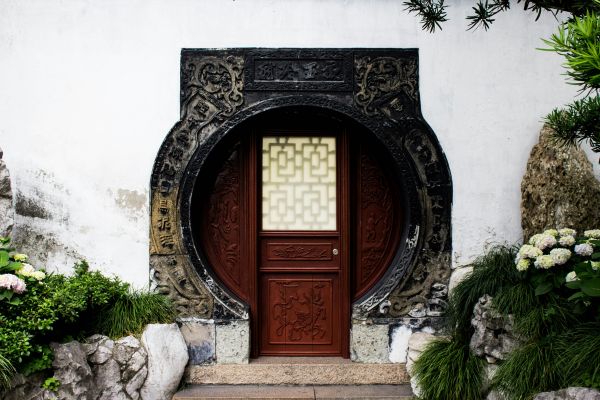
“What changes are taking place, and why?” Judge Hu Shihao (胡仕浩), director of the judicial reform office of China’s Supreme Court presents his views on it.
Judge Hu Shihao, director of the judicial reform office of the Supreme People’s Court (“SPC”), published an article in 2017 on the logic of the ongoing judicial reform in Chinese courts. According to this article, we may gain an insight into what changes are taking place in Chinese courts and why.
The said article is entitled “The Path and Development of the Judicial System Reform of the People’s Court Since the 18th National Congress of the Community Party of China (CPC)” (十八大以來人民法院司法體制改革的路徑與發(fā)展), published in the Forum of Leadership Science (領(lǐng)導(dǎo)科學(xué)論壇), No. 16, 2017.
I published the post “The Logic of China’s Judicial Reform” a few days ago, where the logic described therein is consistent with that of Judge Hu Shihao.
The views of Judge Hu’s article will be introduced below.
I. The direction of the Chinese courts’ judicial reform
The author said that since 1999, Chinese courts have promulgated three five-year programs on judicial reform, but these reforms have not achieved the SPC’s ideal goal. China’s current judicial reform began with the fourth five-year program of the SPC.
General Secretary Xi Jinping has been personally directing this judicial reform, and the Committee of Political and Legal Affairs at Central Committee of the Communist Party of China(CCCPC), the institution of the CPC in charge of leading and managing judicial matters, organizes and promotes the concrete reform process.
The purpose of the judicial reform of Chinese courts is to solve the practical problems, namely:
1. De-localization of judicial power
People’s courts at all levels are set up by the central authority rather than local authorities. As General Secretary Xi Jinping once stressed, the judicial power belongs to the central authority. The author believes that Xi Jinping’s view is the foundation of this judicial reform.
2. De-administration within the court
In the past, Chinese courts implemented the review and approval system of judgment documents, meaning that the final judgment must be approved by the court’s leadership. This had led to two problems: first, the case result was decided by those who may have not heard the case in court; second, the whole leadership of the court was involved in the decision-making, which made it difficult to clarify the responsibilities of illegal/wrongful decisions.
For more information on the administerization within the court, you may visit here.
3. No clear gap between judges and other personnel
In the past, there was no special qualification for judges, so other civil servants and court staff might all have the chance to sit on the bench and hear the cases during the post rotation. This led to the possibility that those who were not qualified as judges could also act as judges and participate in case trial.
For more information on the identity of judges, you may visit here.
II. Core measures of Chinese courts’ judicial reform
1. Reform of judges: de-administration within the court
A. Implement the judicial accountability system
The judicial accountability system refers to “he who hears the case shall make the judgment and be liable therefor”, which is the core of judicial reform as called by General Secretary Xi Jinping. In fact, the judicial accountability system allows judges to make decisions independently to some extent without interference from others.
For more information on the judicial accountability system, you may visit here.
B. Implement the judge quota system
In order to give judges some independence, it is necessary to determine who are judges. As mentioned above, the judges were no different from other court staff previously. Now the court needs to make it clear that people need to get qualification (the ‘quota’) to become judges. And only those who have judge qualification, i.e. the ‘quota judges’ (員額法官) can hear cases and have higher income than other court staff.
Based on this principle, the SPC divides court staff into three categories: judges, judicial assistants and administrative personnel. People with different identities can only engage in work related to their post responsibilities. This further ensures that only judges can participate in the case trial.
The practice of selecting judges from court staff is called the reform of judge quota system(法官員額制). For more information on the judge quota system, you may visit here.
C. Require the court leadership to handle cases
The leadership of the court (such as the president and directors of trial divisions) is usually only engaged in executive direction and management, and is unwilling to hear cases. However, they are often the first to obtain the judge qualification in the implementation of the judge quota system. With the limit judge quotas in every local court, the court leaders leave insufficient vacancies for judges to hear cases. Therefore, the SPC has begun to set case trial indicators for them.
D. Hold judges liable for the case trial quality for life
While endowing judges with some independence, the SPC also establishes a stricter punishment mechanism to prevent judges from escaping supervision and abusing their power.
E. Protect the safety of judges
With more independence on case trials, the judges are more likely to be seen as the retaliating targets when the party is dissatisfied with the case results. Some local court judges have been attacked or even killed by the parties concerned in the past years. In this regard, the SPC has also correspondingly increased the protection of judges’ safety.
2. Reform of the court’s organizational structure: de-localization of local courts
A. Establish circuit courts
The SPC has set up circuit courts in six cities to ensure the implementation of laws and central orders.
The SPC circuit courts mainly solve three problems:
First, the local court is likely to favor the interests of local authorities, i.e., “localization” as mentioned above, while the circuit courts located in different places can decrease this sort of local influence.
Second, the understanding of the law by different local courts is likely to be inconsistent, while the circuit courts can unify the practices of local courts based on the SPC’s perspective.
Third, it is too costly for the parties to turn to the SPC in Beijing. Now the parties can directly resort to the local circuit court.
B. Establish cross-administrative-division courts
In the past, the jurisdiction of every local court corresponds with the local administrative authority, which results in the close contact between the two. Now, the SPC is letting some courts deal with certain cases from multiple administrative divisions, which means that a court of this kind will be superior to a certain local government and no longer vulnerable to the influence thereof.
C. Establish specialized courts or tribunals
The SPC is setting up more specialized courts, such as military courts, maritime courts, intellectual property courts, Internet courts, and is promoting local courts to set up internal specialized tribunals, such as bankruptcy tribunal, environment, and resources tribunal.
These specialized courts or tribunals will focus on certain types of cases within their jurisdiction, and therefore the judges’ trial quality in these cases will be higher. In addition, the jurisdiction of these courts or tribunals often crosses different administrative divisions, so they are more independent of local governments.
D. Open justice
The SPC is making all courts nationwide to upload some case information to the court’s information system, through which the courts disclose the case information to the public. On the one hand, it meets the needs of the public and the parties to obtain information. On the other hand, it actually allows the public and the parties to assist the SPC in supervising local judges.
For more information on judicial reform, you may visit here.
Cover Photo by Yiran Ding(https://unsplash.com/@yiranding) on Unsplash
Contributors: Guodong Du 杜國棟









